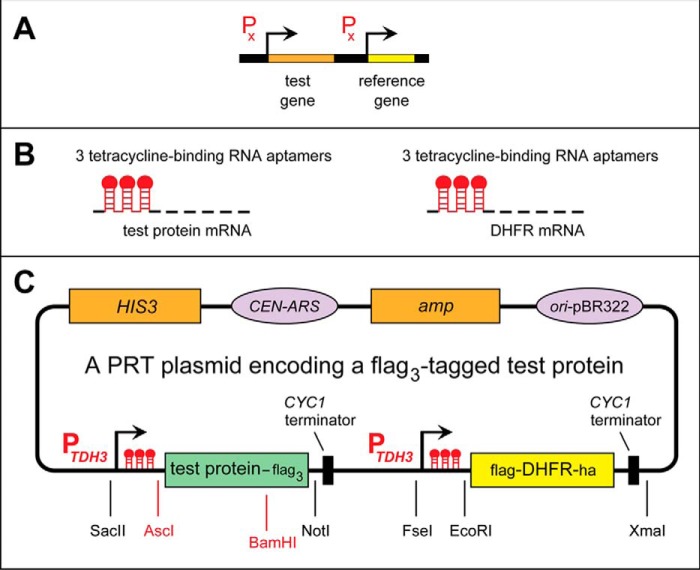Figure 1.
The promoter reference technique. A, PRT design: two identical transcriptional promoters expressing, respectively, a test protein and a reference protein. B, identical sets of DNA elements, developed by Kötter et al. (80), that are present at the two identical, tandem PTDH3 promoters in the current version of PRT. C, a “generic” PRT plasmid, derived from the previously described pJO629 plasmid (54, 55). It contains DNA elements that enable propagation of this plasmid in E. coli (including the ampicillin-encoding amp gene and the origin of DNA replication from the E. coli plasmid pBR322) and in S. cerevisiae (as a low-copy plasmid), including the HIS3 marker gene, the replication/segregation CEN-ARS DNA segment, and the CYC1-derived transcription-terminating DNA segment. This plasmid also encodes the flag/ha-tagged fDHFRha reference protein and a C-terminally triple-flag-tagged test protein. In the present study, the test proteins were X-Mdh23f bearing either N-terminal Pro or N-terminal Ser, as described under “Results and discussion” (Fig. 3 and Fig. S1). The test protein and the reference protein are expressed from two identical PTDH3 promoters containing additional DNA elements (80). Once transcribed into an mRNA, these elements form 5′-RNA aptamers that can bind to Tc, thereby repressing translation of that mRNA in cis.

